Konstfack and the Bauhaus
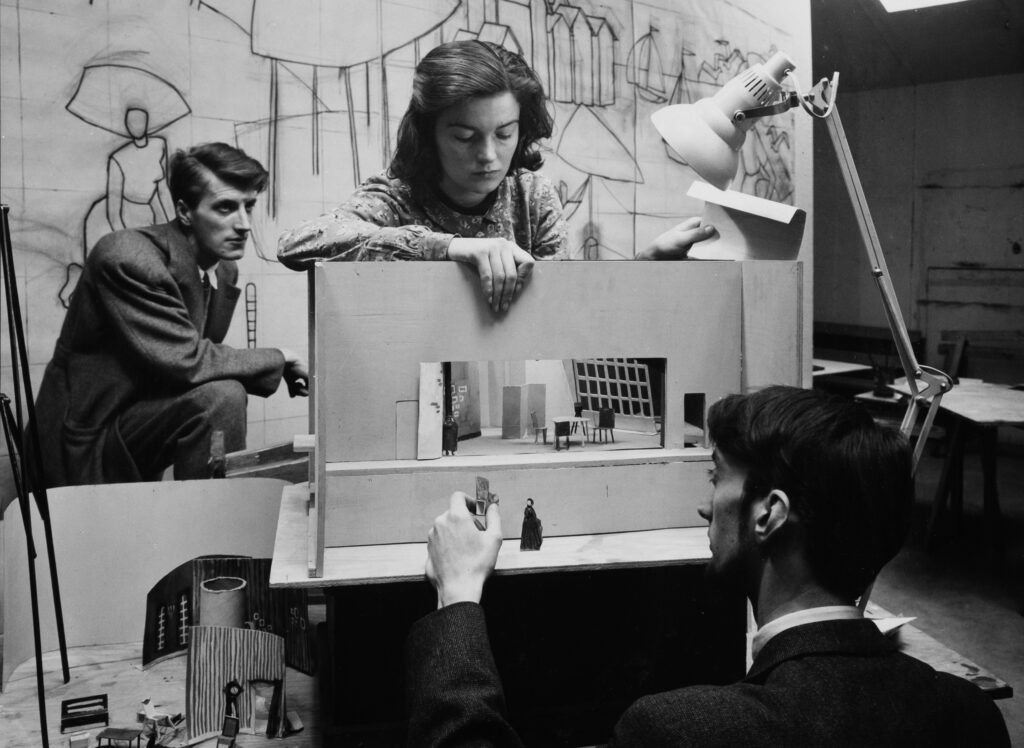
Pedagogic ideas can have an astonishingly explosive power and the ability to spread. But in order for them to be able to land and take root, the ground needs to be prepared. There must be a will to receive the new. Konstfack – a university in Stockholm that educates industrial and interior designers, artisans and artists – is now, in 2021, 176 years old. It has acquired the ability to respond to contemporary needs and embrace thoughts that come from the world outside the school, including those from the Bauhaus schools in Weimar and Dessau and the New Bauhaus – School of Design in Chicago which existed from 1937 until László Moholy-Nagy’s death in 1946.[1]
But it was only in the final stages of World War II that one can speak of an influence from the Bauhaus. Later, in the post-war era, the Bauhaus was not an issue among the Konstfack teachers. More general notions of “modernism” or “functionalism” prevailed. It is difficult to single out Bauhaus ideas from the ones coming from other institutions and persons, such as the Deutscher Werkbund (German Association of Craftsmen) and all their exhibitions in the 1920s and 1930s. What can be noted though from the 1940s onwards is a concern with questions that very much resonate with the ones the Bauhaus had been involved in. The teaching at the school was then reorganized into departments (fack) based on materials: metal, ceramics, textiles, furniture and interiors (i.e. wood), advertising and book crafts as well as decorative painting (public art and scenography) and sculpture. The shift of the curriculum in 1944 was also seen in a name change. The Technical School (Tekniska skolan) then became the School of Crafts and Design – Konstfackskolan.
The school had started as a Sunday Drawing School for Craftsmen (Söndagsritskola för Handtverkare) in 1844. The artist Nils Månsson Mandelgren realized that when the guild system would be abolished in 1846, the teaching offered by the guilds would also cease. But there was still a need for artistically trained workmen who could make technical drawings, design and build stoves and sewing machines made of cast iron and wooden furniture with decorations. Since young craftsmen also needed to support themselves, the lessons took place on Sunday mornings, hence the name.
The school was housed in the attic of the Royal Academy for Fine Arts. But it needed funding. An association was therefore founded in 1845 to support it, the Svenska slöjdföreningen (the Swedish Society of Crafts and Design),[2] with members from Stockholm’s affluent and well-known bourgeoisie. In 1846, the society took over the school, which was named the School of the Swedish Society of Crafts and Design, commonly called Slöjdskolan. It moved to new premises and was given a new principal. Thousands of students flocked to the school, including from the mid-1850s a significant number of young women. Unmarried daughters of priests, businessmen, etc. now had to earn their own living. Their families had no farms, mansions or money to support them. At Slöjdskolan they learned, among other things, geometry and its practical application, linear drawing, freehand drawing, shaping figures and forms from wax, clay and wood. And they could become drawing teachers. In 1866, the state began to provide the school with grants and the city of Stockholm with rent subsidies. In 1868, it received a new, specially designed building in the middle of Stockholm.
[1] László Moholy-Nagy came to the Bauhaus as a teacher in 1923 and to the New Bauhaus in Chicago as its director in 1936. Through the American artist Adelyne Cross Ericson, a student and later teacher at the New Bauhaus, Moholy-Nagy’s pedagogical ideas came to Sweden, when in 1950 she moved there. She taught at Grundis, a basic art school at the Stockholm university. Some of her students then entered Konstfack and went on to become art teacher or designers.
[2] While in the 19th century the Swedish word “slöjd” meant all sorts of craft and industrial branches, today it is connected with the homecraft movement.

In 1878, the Slöjdskolan was renamed the Tekniska skolan (Technical School) in connection with a major reorganization. Under the guidance of its dynamic principal Victor Adler, it received a new, modern curriculum, with aesthetic influences mainly coming from the British Arts and Crafts movement.[3] Vegetation and flowers were to be drawn from nature, not copied from pattern books. Half of the teaching staff were women. A generation of very talented female children’s book illustrators, textile artists, jewelers, glass artists and pattern designers graduated from the school around 1900. Their innovative arts and crafts products are among the best designs that have emerged in Sweden.
The school’s connection to the Swedish Society of Crafts and Design had already ended in 1878, when the Swedish state took over. This did not prevent the Society from criticizing the school. The teaching was considered outdated, and the Society wanted to see skilled designers who could lift artisan craftwork to new heights.
[3] Dates and other facts from different sources, among others from the article “KONSTFACKSKOLAN 100 ÅR”, Form 5/1946, p. 89.

In 1913/14, a new generation of creatives and scholars joined the board of Svenska Slöjdföreningen: textile artist Elsa Gullberg (1886–1984), architect Torsten Stubelius (1883–1963) and art historians Erik Wettergren (1883–1961) and Greger Paulsson (1889–1977). They were well informed about the development in Germany and how the collaboration there worked between artists/designers and producers. The four prepared a new organization of the Society and used the Deutscher Werkbund as a model.[4]
The Weissenhof Estate in Stuttgart was part of the 1927 Werkbund exhibition and had a decisive influence on a Stockholm exhibition in 1930, which in turn became the breakthrough of functionalism in Sweden. But from the Technical School the only students participating were the ones following the courses of the painter Olle Hjortzbergs (1872–1959). His teaching was considered to be the only one that met the exhibition’s modern needs. Hjortzberg’s students painted the theater scenographies and some pavilions at the exhibition. Criticism within Svenska Slöjdföreningen against the Technical School grew. In 1931, the working committee of the Society declared that one of its most important tasks was to find appropriate guidelines for teaching artisan craftwork.[5]
The energetic Gregor Paulssson, the Stockholm Exhibition’s general commissioner, Erik Wettergren, director of Svenska Slöjdföreningen, and the architect Hakon Ahlberg (1891–1984), member of the Society, sent a letter to the Ministry of Education with suggestions on what a modern way of teaching design, crafts and art should look like.[6] The letter was published in the Swedish magazine Form. Here are a few lines from it: “The school is in need of a radical reorganization. The modern artisan craftwork requires far more in-depth technical knowledge and a deeper insight into their working methods and economic conditions. The students do not derive their forms from a supply of forms and ornaments of various styles or of a temporary nature, but seek to attain artistic impact primarily through an intensive study of the material’s inherent possibilities in its interaction with application and purpose.”[7]
The three proponents’ opinion that it was the materials themselves that should be the starting point was shared by the management of the Bauhaus school. This was one of the major changes compared to the 19th century and the 1900s, when first the style history and then the depiction of nature were in focus.
[4] The board of the Werkbund was also rejuvenated. Some young architects were elected. Henry van de Velde, who for political reasons was forced to leave the School of Arts and Crafts in Weimar, recommended the young architect Walter Gropius as his successor. Following this suggestion, Gropius was appointed the school’s director, and he gave the school its new name, “Bauhaus.”
[5] Form 7/1933, p. 82. The magazine of Svenska Slöjdföreningen took its new name in 1932 after the German Die Form, which was published from 1925 to 1934 by the Deutscher Werkbund. The Swedish magazine Form still exists.
[6] „Skrivelse från Svenska slöjdföreningen ang. den konstindustriella undervisningens omorganisation,“ Form 4/1933, p. 81–86.
[7] Form 4/33, p. 84-85.

The proponents made more demands: “Great attention should be paid to the methodology of this artistic vocational education, and in doing so, experiences from foreign leading crafts schools should be studied. The school must therefore be equipped with workshops or laboratories for each profession, and it is desirable that these are provided with tools which industries and craft workshops use in practice. (…) The school’s teachers should also, if possible, have direct contact with industries and craft studios. Students should, to the extent possible, be engaged in direct orders from industry or in producing attractive, salable designs.”[8] The proposals are almost identical to Walter Gropius’s pedagogical conceptions, which were about developing new prototypes for German industry.
[8] Ibid, p. 85.
But the course of events in Germany was a problem. With the advent of National Socialism, Germany was no longer an example to follow. In the beginning of 1933, Wolf Joho published a long critical article about the cultural reaction in Germany. He goes from one topic to another, from painting to film, theater and the radio. He begins with the Bauhaus school, both its history and the political reasons behind its closure. The conservative arguments by the National Socialists are countered one by one. “The question of flat or sloping roofs is hardly political. With the Bauhaus’s being or not being, a German cultural value is at stake and a valuable body for the education of the young generation of architects.” And he highlights examples of teachers and students’ successes in several competitions such as the Bernau Trade Union School in which Bauhaus students and the director Hannes Meyer won first prize.[9]
The teaching methods also took a different path after 1932 in Germany, and especially after the National Socialists took over power in January 1933. That year, the magazine Die Form contained a list of 20 museum directors and professors who were forced to leave their jobs, among others the well-known champion of modern typography, Jan Tschichold. The editor-in-chief of the German Die Form had also been fired. Its Swedish counterpart, Form, also noted that Gropius and Ludwig Mies van der Rohe had left the Deutscher Werkbund, “which now had a party-loyal, National Socialist leadership.”[10]
Gregor Paulsson, editor of the Form magazine, distanced himself from the development in a country whose culture had hitherto meant so much to him. He commented on the National Socialist, conservative critique of modernism: “In Sweden, the social benefit has been at the center of interest, the increase in quality in the crafts. And that has been like that for around 15 years. And now the Deutscher Werkbund considers the epoch-making exhibition in Stuttgart in 1927 a big mistake. Is this a conceptual confusion or falsification?”, Paulsson wondered and added, “We have always believed that our work towards the implementation of the idea of good-quality household products meant working for a cultural democracy.”[11]
But what did this change mean for the arts and crafts schools? The writer Hans Rabén reported about a trip to Hamburg and wrote: “The purpose of the visit was to see how Nazi pedagogy worked in practice.”[12]
His article was entitled “A German arts and crafts school under the new regime”. He is both critical and ironic. “The famous former director of the school had been fired. The reason had been his preferences for modern art and that his ideas were the same as the ones at the former Bauhaus school in Dessau.” Hans Rabén points out in his article that these ideas are summarized under the term functionalism in Sweden.
The transition to National Socialist politics did not come with new pedagogical approaches, he stated. Schools had returned to drawing from nature and depict old plaster models, “instead of starting from the material that had been the Bauhaus school’s model.” He further reported that periodically, students had to take part in “agricultural work according to the Nazi blood and soil ideology.” In the architecture schools, “they teach that the roof should occupy two thirds of the house height and be designed in the same spirit as the North German folk culture.” The textile department did no longer deal with dyeing yarn. “Vegetable dyes are almost completely lacking, which may seem strange with the cult of the earthworm that is now practiced in Germany,” he pointed out.[13]
[9] Form 1/33, p. 10–11.
[10] Form 8/33, unnumbered page.
[11] Ibid.
[12] Hans Rabén. “En tysk konstindustriskola under den nya regimen”, Form, 3/35, p. 66–69.
[13] Ibid., p. 68.
In Sweden, the first step of the transformation of the Technical School was taken in 1936. A group of professionals was appointed by the National Board of Education in order to plan the reorganization. Their proposal was finished two years later, but it was only at the end of the war that it became official. By 1938, the building and the mechanical engineering departments had already been spun off and formed a new technical educational institute in Stockholm. Six years later, the rest of the school got a new curriculum and name, Konstfackskolan, officially established by the Swedish government in 1945.
After the reorganization was completed, there were a two-year Industrial Design Day School, the Konstindustriella Dagskolan (KD), a three-year Industrial Design Evening School, Konstindustriella Aftonskolan (KA), and a two-year higher Industrial Design School, the Högre Konstindustriella Skolan (HKS), for which the students had to apply. The three-year course for drawing teachers formed a separate unit, that in 1979 was officially renamed Bildlärarinstitutet (BI, Institute for art pedagogy). It includes all types of subjects such as art psychology, visual communication, art pedagogy, architecture, environmental sciences, semiotics, etc. in its teaching.
Some students applied for the evening school (KA), a model allowing them to earn their living during daytime. (The evening school was closed in 1978 when the school became a university.) It would be presumptuous to say that the evening school can be compared with Johannes Itten’s and László Moholy-Nagy’s preliminary courses at Bauhaus. But it did give the students a common artistic basis and the opportunity to reflect on which department they wanted to choose for their further studies. Compared to the Bauhaus, the students at Konstfackskolan needed more time to get a degree. But they were younger than those in Weimar and Dessau and often could not rely on previous thorough art studies.

In 1946, Åke Stavenow was appointed rector of the newly organized school, following the architect Dag Melin who had started the reform. Åke Stavenow had been one of the professionals in the group working on the new curriculum. At the Konstfackskolan, as the school was now called, teaching was to be based on different materials and areas: ceramics, metal, textiles, interiors and furniture (wood), advertising and book making (graphic design), painting and sculpture. The various departments were led partly by teachers, who were responsible for the students’ artistic and professional development, and partly by craftsmen who taught various techniques. So the model was the same as that of the Bauhaus. In addition to experts teaching in the specific disciplines, there were a number of teachers who generally contributed their knowledge of color, shape and light, just like at the Bauhaus.
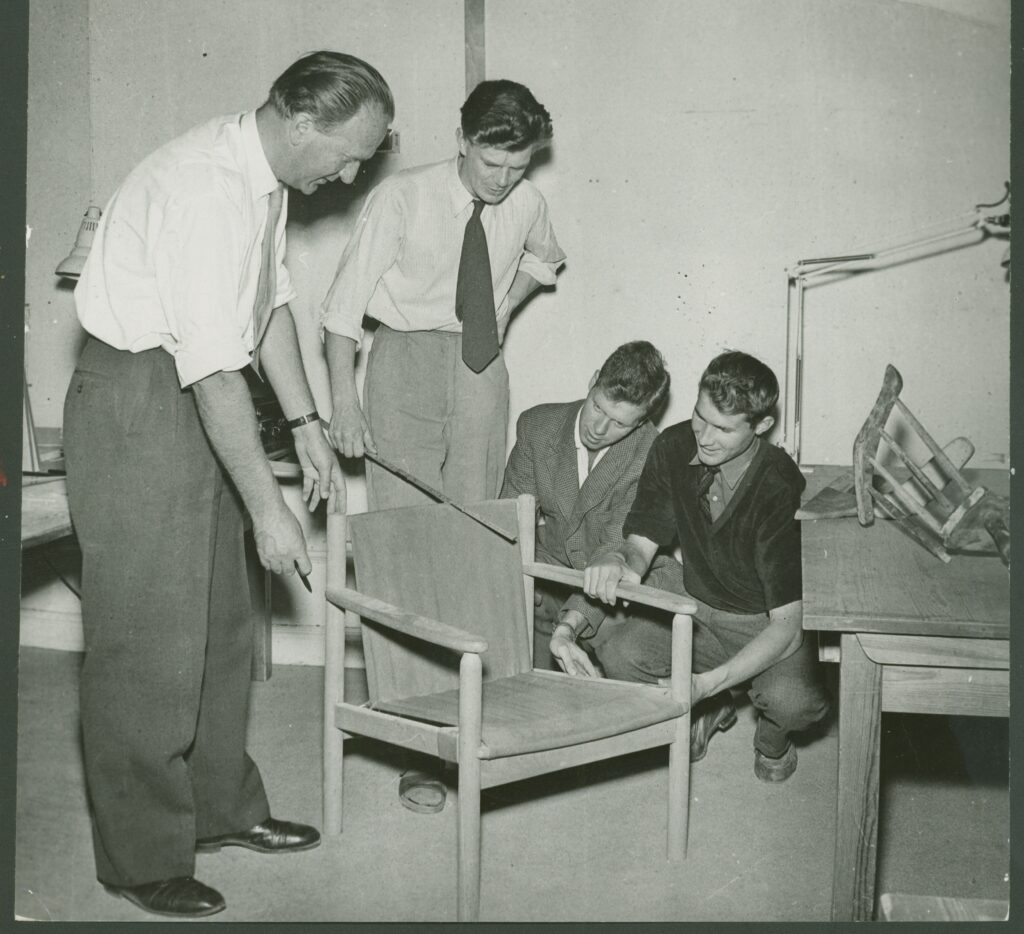

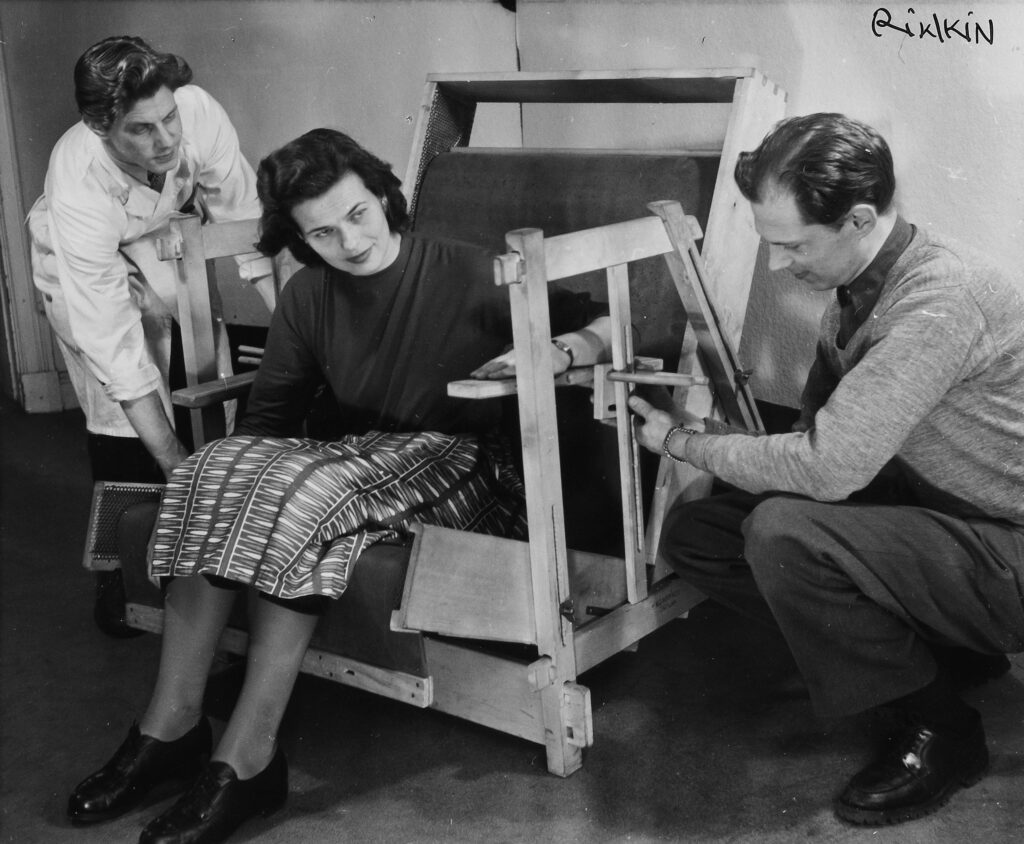
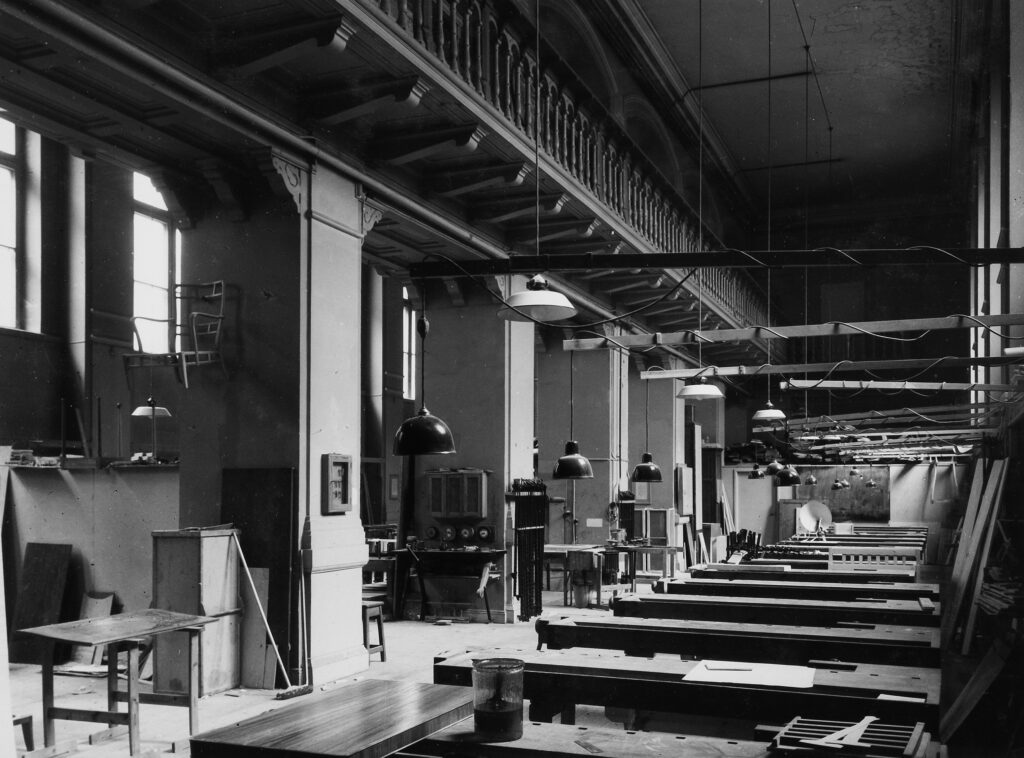
The ceramics and the metalworks departments included some industrial design tasks, while the textile one was focused on weaving and craft techniques. However, after graduating, some former textile students decided to work on pattern designs in the textile industry or to apply to NK’s textile department[14] headed by Astrid Sampe.[15]
[14] NK (Nordiska Kompaniet) was the big department store in Stockholm. It also ran a furniture factory and an interior design office, and it took part in the international world exhibitions as well as in the big design exhibitions in Sweden, for example the Stockholm exhibition in 1930. Before the Paris exhibition 1937, NK founded its textile department with Astrid Sampe as manager.
[15] Astrid Sampe (1909–2002) started to study at the Technical School (Konstfack) in 1928 to become a drawing teacher. After two years she joined the textile department at the Royal College of Art in London, where she became friends with early British modernists. After that she resumed her studies at Konstfack and graduated 1933 as a textile designer. She was a devoted modernist all her life. There were more female Konstfack students who adopted modernism, for example the furniture designers Greta Magnusson (married Grossman), Margareta Köhler and the silversmith Sylvia Stave, and that in spite of the old-fashioned teaching according to the Swedish design organisation Svenska Slöjdföreningen.

Like the Bauhausler Otti Berger,[16] who for a while was responsible for teaching industrial weaving at the Bauhaus in Dessau, Astrid Sampe was extremely interested in industrial textile techniques and new fibers as cellulose, cellophane, viscose, rayon and fiberglass. Otti Berger had come to Stockholm in April 1929 in order to join a course at the Johanna Brunssons vävskola, the so-called Practical Fabric School, for eleven weeks. The course ended with a vegetable dyeing section with teacher Barbro Nilsson, who later became head teacher of the textile department at Konstfackskolan.
In January 1930, Otti Berger’s own textiles were shown at Galerie Moderne, in Stockholm, alongside an exhibition on “radical,” modernist Swedish residential architecture, similar to the one in Germany. Before the opening of the exhibition, Berger had already left Stockholm again for Dessau. Besides a brief, but positive revue in newspaper Dagens Nyheter,[17] there was an article in Form magazine in 1930.[18] Later, Berger’s interesting and analytical article “Right fibers in right place” was published in the magazine Spektrum, Arkitektur och samhälle.[19] She describes what functions textiles should fulfill in rooms and how structures and colors are affected by materials and light. Knowledge like this was adopted by Astrid Sampe. Through Otti Berger’s stay and her lectures[20] in Stockholm in 1929, László Moly-Nagy’s emphasis on the uniqueness and tactile properties of different materials were transferred to Swedish textile designers. (Interest in hand weaving greatly increased in Sweden in the 1940s.)
For modernists like Astrid Sampe and the students at Konstfackskolan, the textiles were to go well with the new modern functionalist architecture. No small-scale romantic floral patterns would do. In the 1950s and 60s, the adaptation to modern architecture was solved by large-scale, silkscreen-printed modernist patterns.
[16] Otti Berger (1898–1944) had arrived to Dessau in 1927, where she became involved with textiles in the architecture program. The textiles were to complement the modernist Neues Bauen (New Building) both functionally and aesthetically. Among other things, she created an alphabet of materials, readable by the fingertips from left to right.
[17] Dagens Nyheter, January 19, 1930.
[18] Form 1/1930, p. 127–132.
[19] No. 2, 1933. Spektrum, Arkitektur och samhälle was a radical leftist magazine with articles about architecture, housing and town planning.
[20] Hannes Meyer, the director of the Bauhaus in Dessau, had asked Otti Berger to give lectures about the Bauhaus during her time in Sweden.
The new curriculum needed a new building for the different departments with adequate workshops and equipment. The Royal Building Board had announced a competition won by the architect Gösta Åbergh. And in 1957, some of the departments were able to move in. 1959 the whole school and all the students were in place and the grand inauguration could take place.

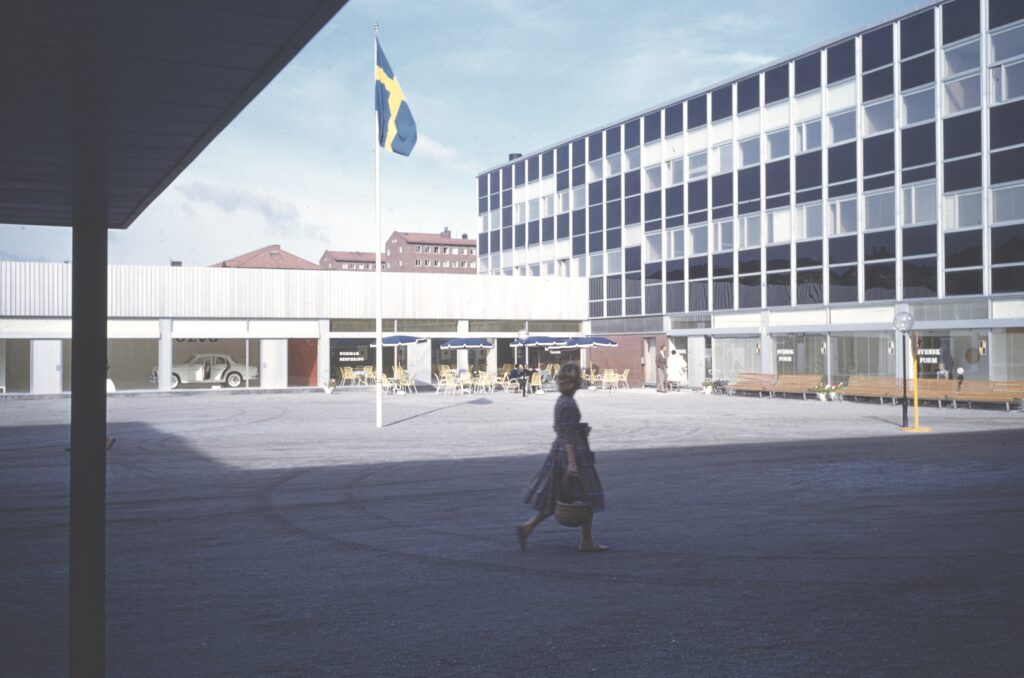
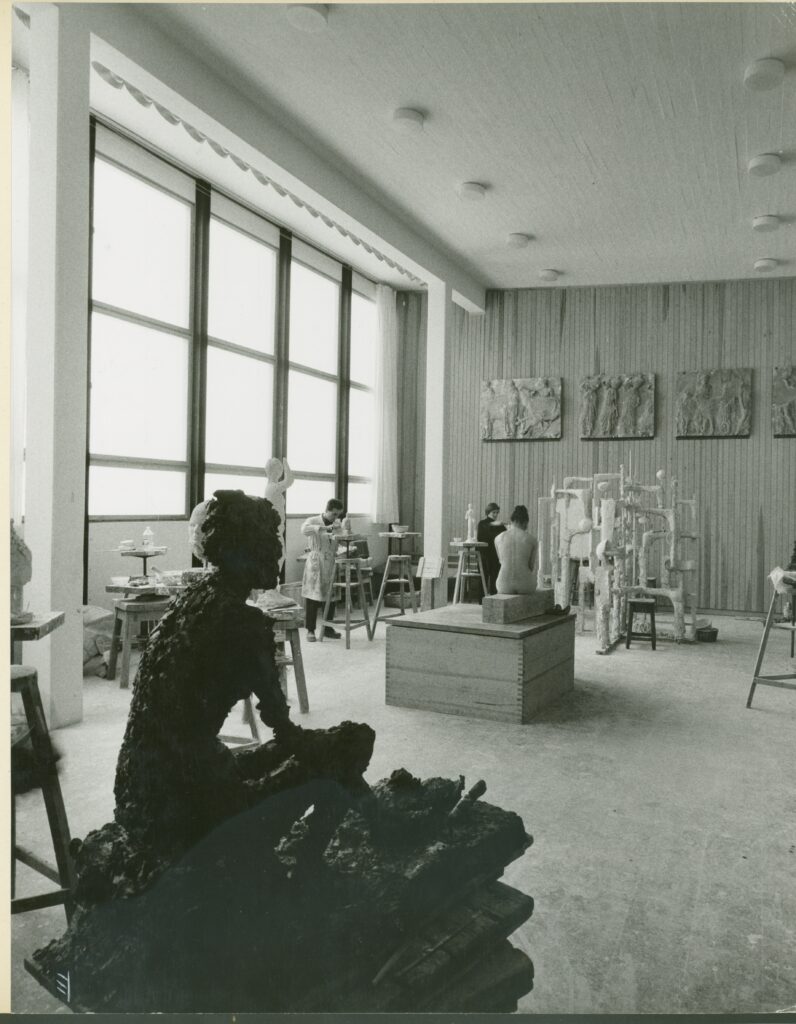
Just like at the Bauhaus, the school’s students were involved in the design of new furniture and in the interior design. Well-equipped workshops, lecture halls, different departments for the various crafts, a large assembly hall called the White Sea after the large white hall that existed in the former school building, was now realized here. The White Sea became an arena for high-profile exhibitions, fun parties, famous masquerades … The students also had music groups like the ones at the Bauhaus. The annual Gärdes festivals with kite flying competitions next to the school drew crowds of people. Creativity flourished.
In 1978, Konstfackskolan became a university. The departments, now renamed institutes, were led by professors instead of teachers. The metal department was divided into two. Next to the precious metals and jewelry department, a new institute for industrial design was installed with a professor of its own.
In addition, the school got another new institute called “Color and Form” (Färg och Form), which accounted for a third of all classes with subjects such as color, form, different kinds of drawing from croquis to perspective drawing, casting techniques, painting techniques, etc. “The goal was to develop the students’ vision and skills and raise their awareness,” artist Gösta Wessel, who taught at the Konstfacksskolan from 1990 to 2003, declared. He wanted them to understand how the appearance of colors and forms is affected by complex contexts,[21] just as the Bauhaus school once had done. Furthermore, the demand for theoretical teaching increased. Until then, the curriculum had been based on craft techniques and artistic training. The Swedish National Agency for Higher Education complained about Konstfack’s lack of theoretical training, so a number of teachers covering subjects like the history of art and design research were called in to give lessons at the school.
In connection with the 150-year jubilee in 1993, Konstfackskolan officially changed its name to Konstfack, which it had been called for decades already. The anniversary was among other things celebrated with the publication of a large book. Gösta Wessel also authored a chapter of the book, where he relates his own teaching practice to the Bauhaus: “All education at Konstfack rests on an artistic basis, both by tradition and purposeful will (…) Like the Bauhaus, we at Färg och Form believe that there is some general basic knowledge of color and form that is important for the artistic development (…) The courses in free painting at the Bauhaus gave rise to endless discussions about the role of art in relation to technology and design. These discussions have been going on with us for a long time and will hopefully continue in the future. The accumulated experiences from the Bauhaus and the development of the Bauhaus tradition in the 20th century is for us an important source of knowledge.”[22] Gösta Wessel studied in depth both Johannes Itten’s and Josef Albert’s color theories and built up a color laboratory at the school. There he investigated, among other things, how color pigments and textures are affected by binders.
[21] Gösta Wessel, “The basis of art”, in Widengren, Gunilla (ed.), Tanken och handen, Konstfack 150 år, p. 47–48.
[22] Ibid.
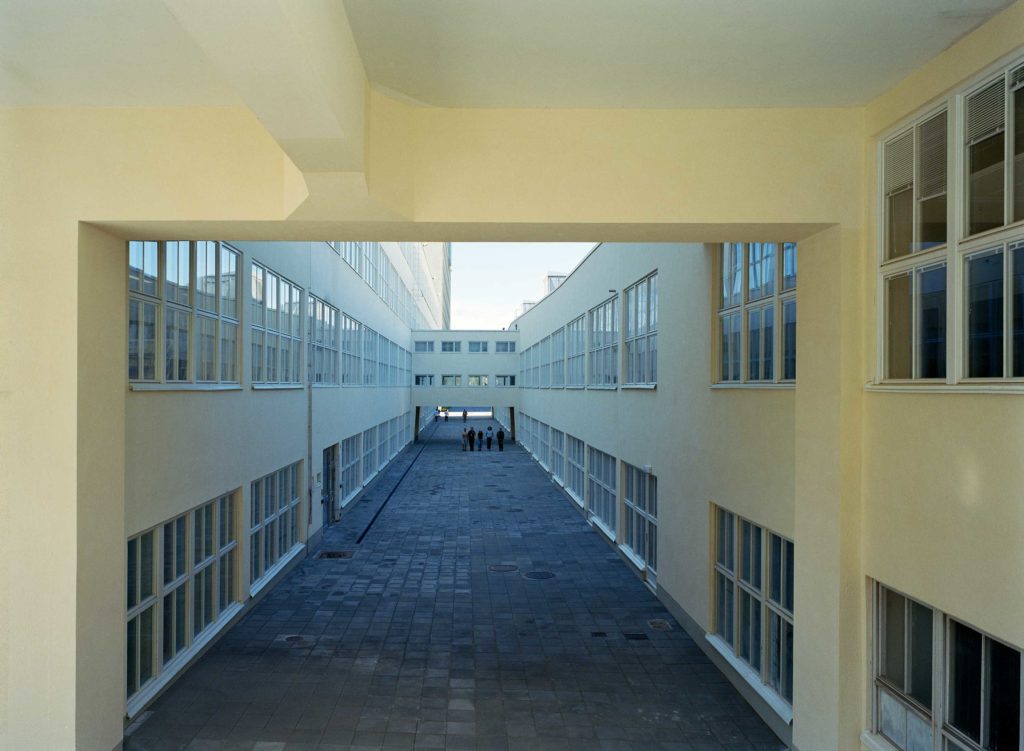

In 2004 Konstfack was forced to move to new premises. The craft workshops did not comply with health regulations, and the costs for a new building would have been more than the school could afford. Instead the company Ericsson’s old empty telephone factory was refurbished and became the new home of the school. The Bauhaus, too, as we know had to move to a telephone factory in 1932 before it was finally closed down. Hopefully Konstfack will not suffer the same fate.
But long before that, there had been more elements of Bauhaus pedagogy at the school. The artist Nils Nixon had taught morphology and perception in the 1950s similar to the lessons by Moholy-Nagy. At the Konstfackskolan the subject was called “art psychology and perception studies.” Arts, crafts and design schools aren’t closed systems. They relate to phenomena in their contemporary social context. The Bauhaus school was not static but changed through its own, inner development as well as events in the outside world. The same is true for Konstfack.
(*1941) is a journalist, author and professor the history of design and arts and craft. As a longstanding editor of the magazine Form and Konstfack professor, she has for many years contributed to debates, research and education in the field of design and craft. She is regarded as one of Sweden’s leading Bauhaus experts.